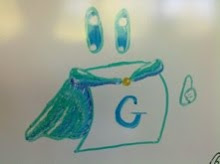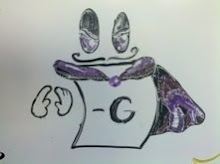Oops!
Two weeks ago I assigned my software engineering students a new project: they were to add Hex to their collection of combinatorial games. To this point they had only implemented impartial games; this was to be a bit of a wrench in the mix.
Unfortunately, I picked a poor partisan game. Hex itself is an excellent game, but I forgot that it was a bit difficult to determine whether the game is over. The obvious approach to determine this comes down to graph connectivity, something beyond the scope of the project. Oops!
Luckily, I quickly recalled the proof of the Hex Theorem: when all hexes are colored, there will be exactly one winner of the game. The late David Gale does an excellent job of describing the theorem in this paper, showing the link between Hex and Brouwer's Fixed-Point theorem. I explained to the students that they should follow the boundaries from one of the corners of the board and see which corner it ends up at. For example, if they choose a corner where the blue side is on the left and red on the right, they can hug either the blue or red boundary (this might be the same if most of the board is colored).
First note that this path created by the boundary cannot end; it will exit through one of the other board corners. Note next that it cannot exit through the corner exactly opposite; the colors there are on the opposite sides! Thus, the path will veer either right or left (from the point of view of the entering corner). If, like we said, blue is on the left and red the right and while hugging the blue boundary we exit to the left, it means blue has not yet won the game. If, on the other hand, the path exits to the right, then there are blue hexes connecting the two sides of the board: blue wins! The opposite is true for red.
My students coded up their project and it works very nicely! Still, next time I think I'll assign Clobber instead!
Jokes from the Audience
5 days ago



No comments:
Post a Comment